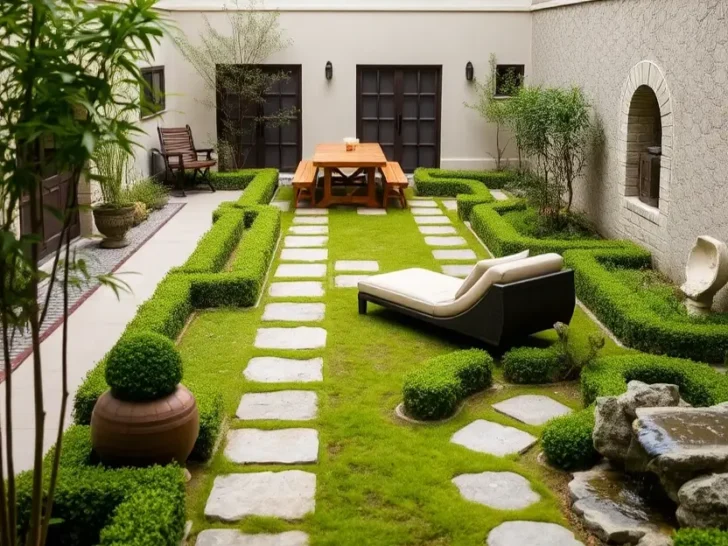Modern life demands moments of peace. Zen courtyards offer a sanctuary. Inspired by Japanese design, they blend nature and tranquility. Clean lines, natural materials, and thoughtful details create a serene escape. Discover adaptable ideas. Stone, water, and plants combine for a beautiful, personal retreat. Find your calm.
1/20. Balance Open Space and Enclosure
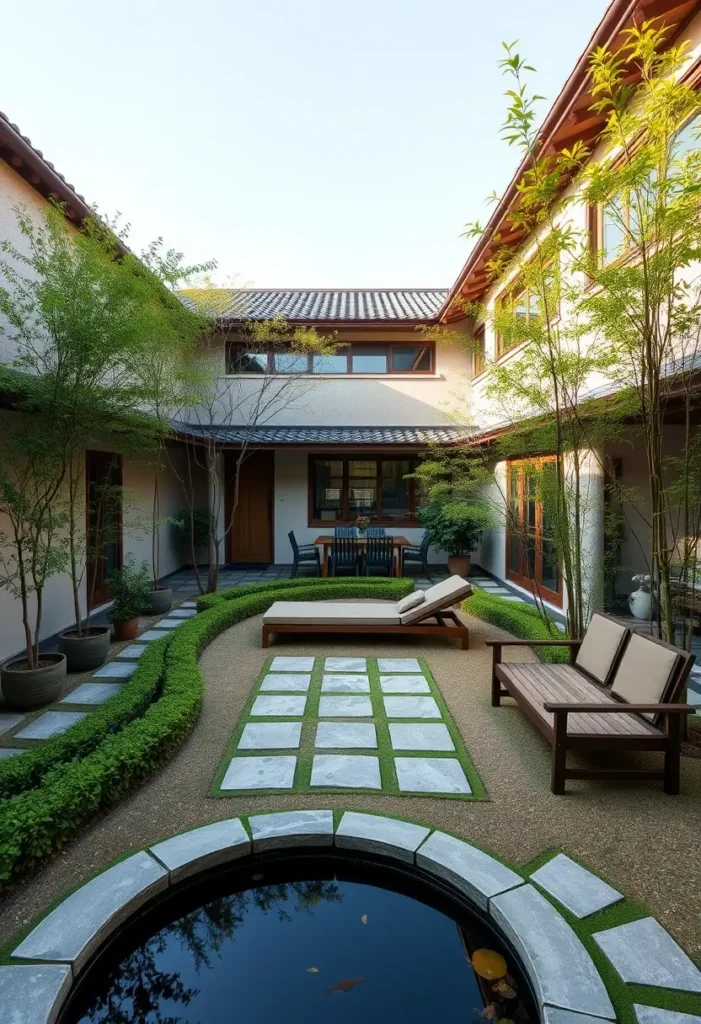
Courtyard design uses surrounding structures to create intimacy. Low hedges define boundaries without blocking light. Strategically placed trees offer shade and vertical interest. Pathways of stone create visual flow. The Key: the balance between open space.
2/20. Create Flowing Pathways and Borders
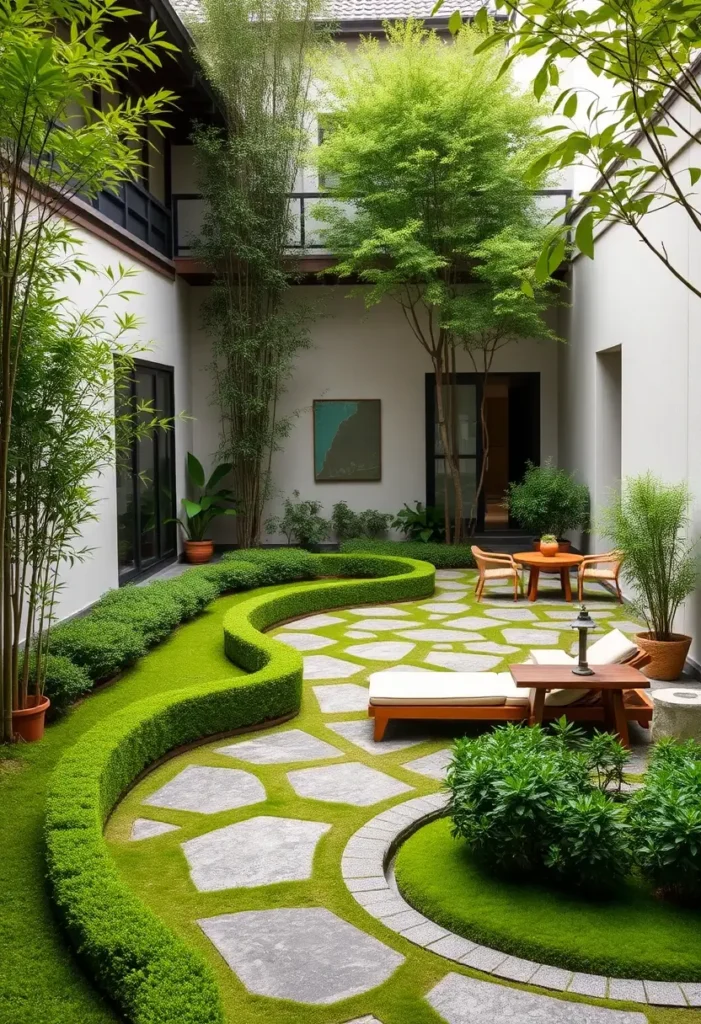
Curvilinear lines soften the geometry of a courtyard. Stone pathways meander through the space. Mounded hedges echo the curves. Create visual harmony. Consider ground cover between stones for a touch of softness.
3/20. Incorporate Symbolic Water Features
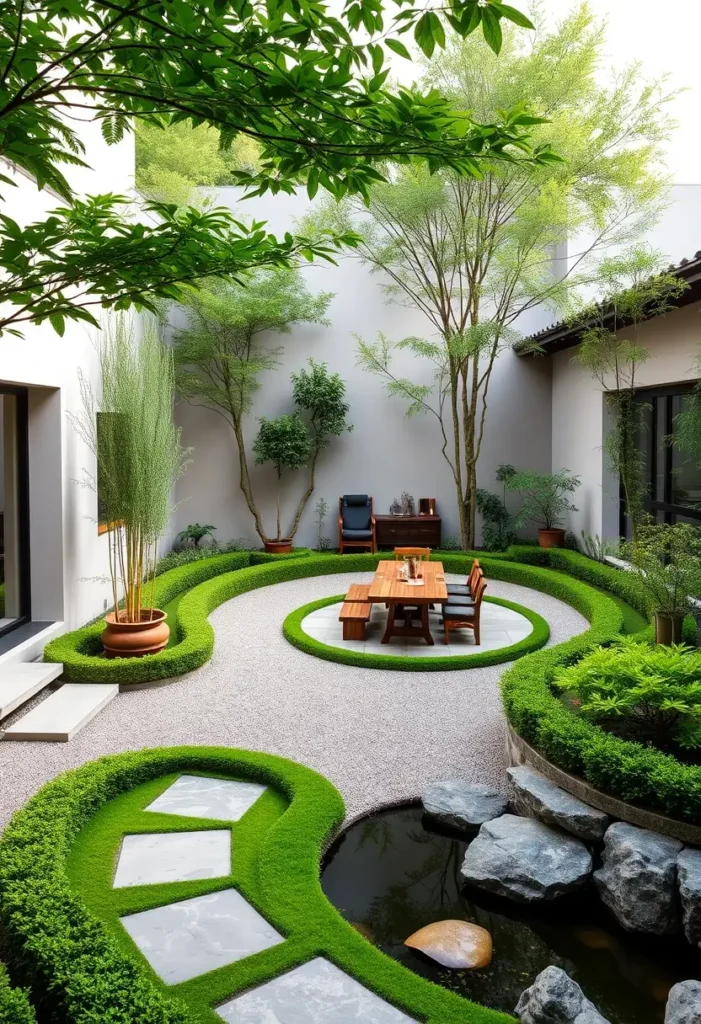
Water represents purity and tranquility. Reflecting surrounding elements, adds depth. A simple stone basin creates a focal point. Consider the interplay of water, stone, and greenery.
4/20. Introduce Minimalist Furnishings
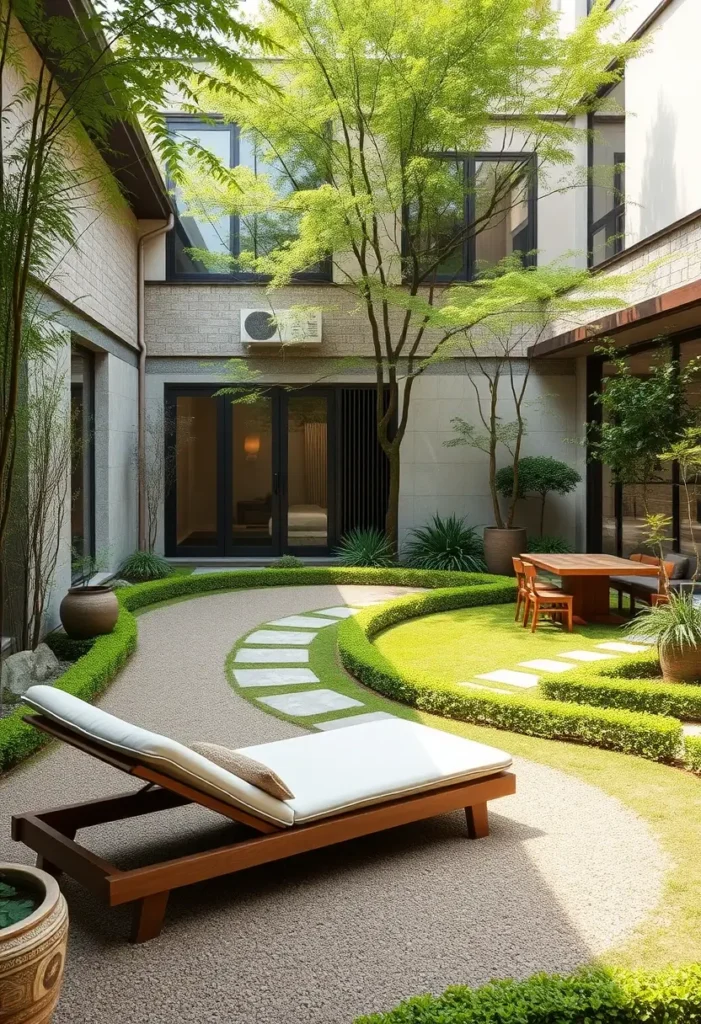
Carefully chosen furniture enhances functionality. Simple lines and natural materials are important. A single chaise lounge invites relaxation. Select pieces that complement, not compete. Keep comfortable and straightforward.
5/20. Play with Contrasting Textures
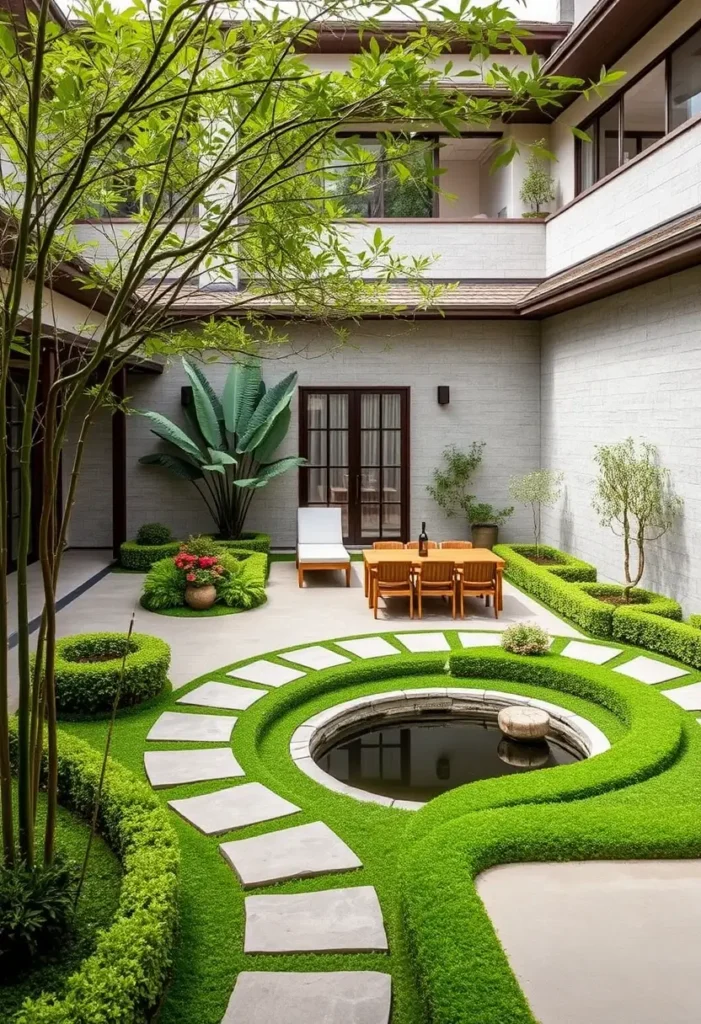
Combine smooth stones with soft ground cover. Mix gravel with manicured hedges. Juxtapose rough-hewn rock with delicate foliage. Textural contrast adds depth and visual richness. Create a sensory experience.
6/20. Frame Views with Vertical Elements
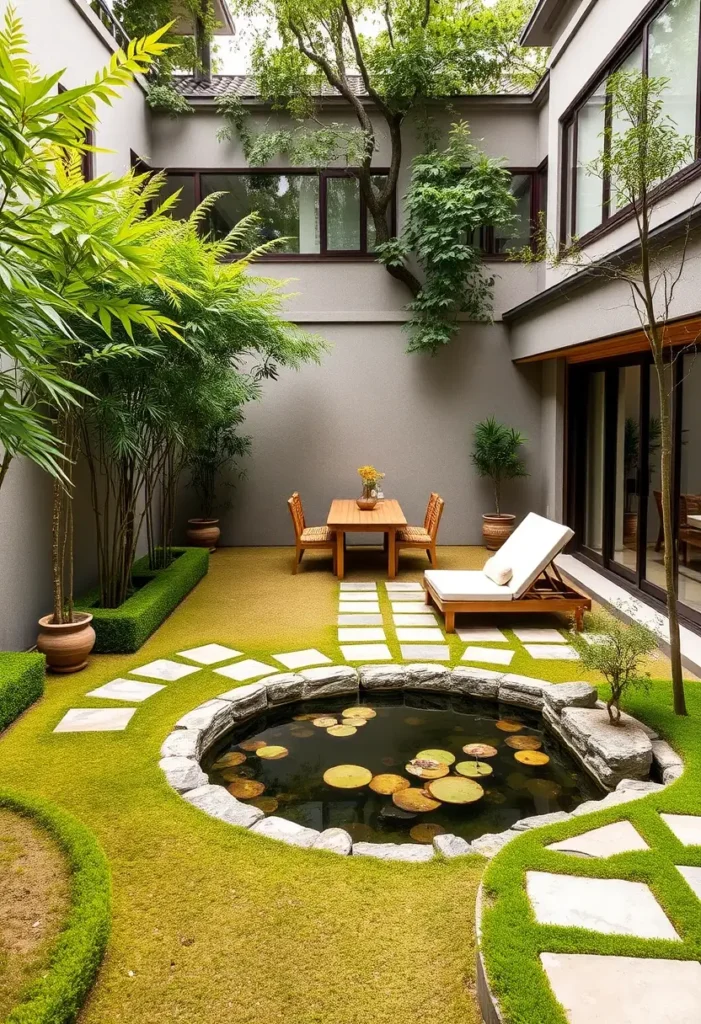
Tall, slender trees create a sense of verticality. Balance the horizontal expanse of the courtyard. Frame views and draw the eye upward. Soften architectural lines. Create a feeling of enclosure and privacy.
7/20. Define Zones with Purpose
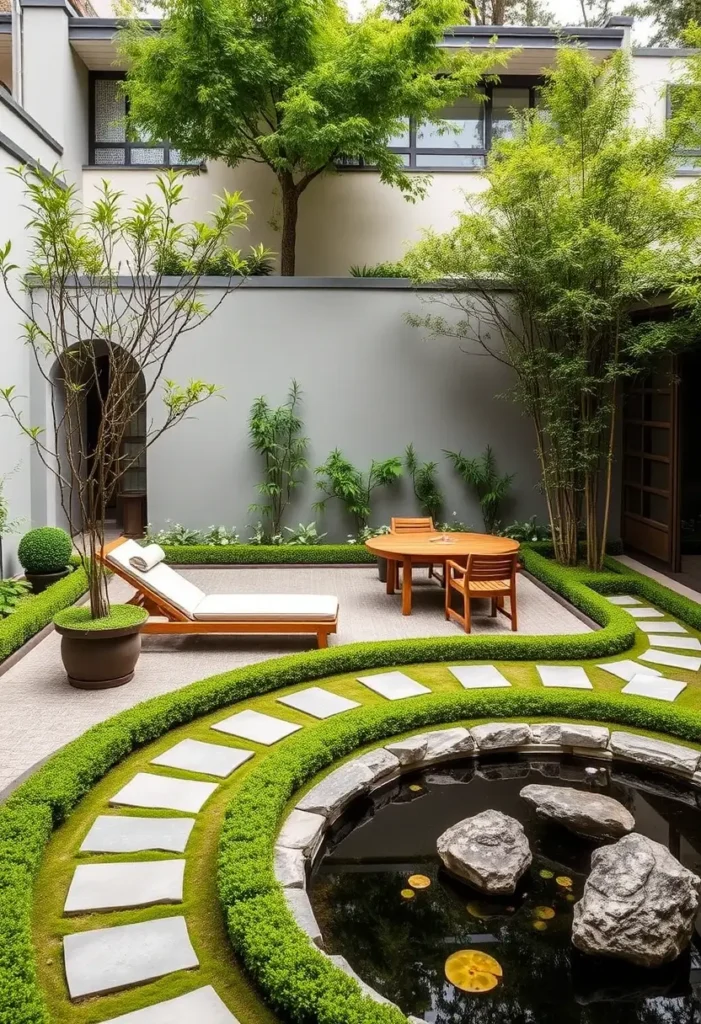
Create distinct areas within the courtyard. A seating area encourages conversation. A water feature provides contemplation. Pathways invite exploration. Define zones. Give each area a clear function.
8/20. Embrace Asymmetry for Naturalism
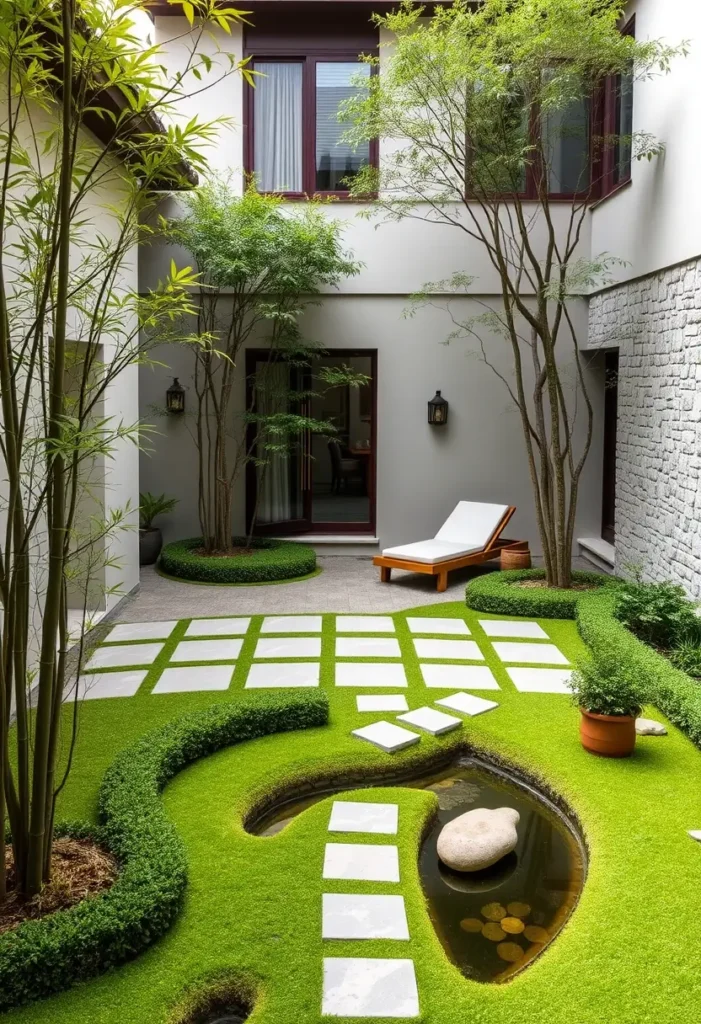
Avoid strict symmetry. Asymmetrical arrangements feel more organic. Mimic the irregularity found in nature. Balance elements without mirroring them. Encourage visual exploration.
9/20. Use Green as the Dominant Hue
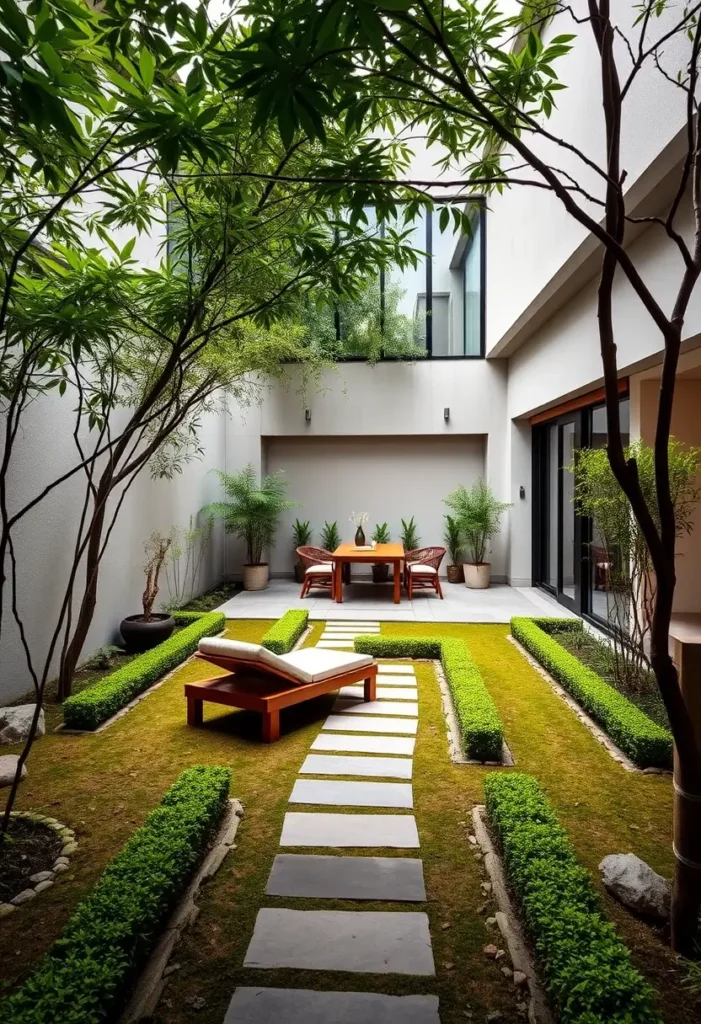
Embrace a verdant palette. Layer shades of green. Create a soothing backdrop. Use colorful accents sparingly. Prioritize the calming effect of green.
10/20. Choose Materials that Age Gracefully
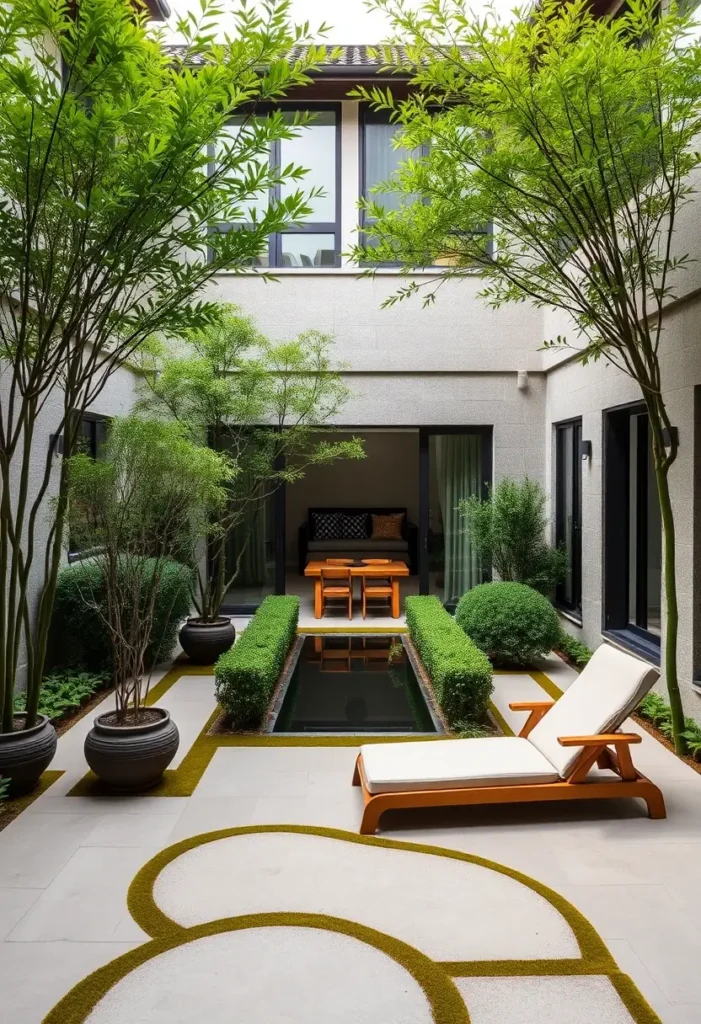
Natural materials weather beautifully over time. Stone develops a patina. Wood gains character. Select materials that will enhance, not detract.
11/20. Extend Indoor Aesthetics Outdoors
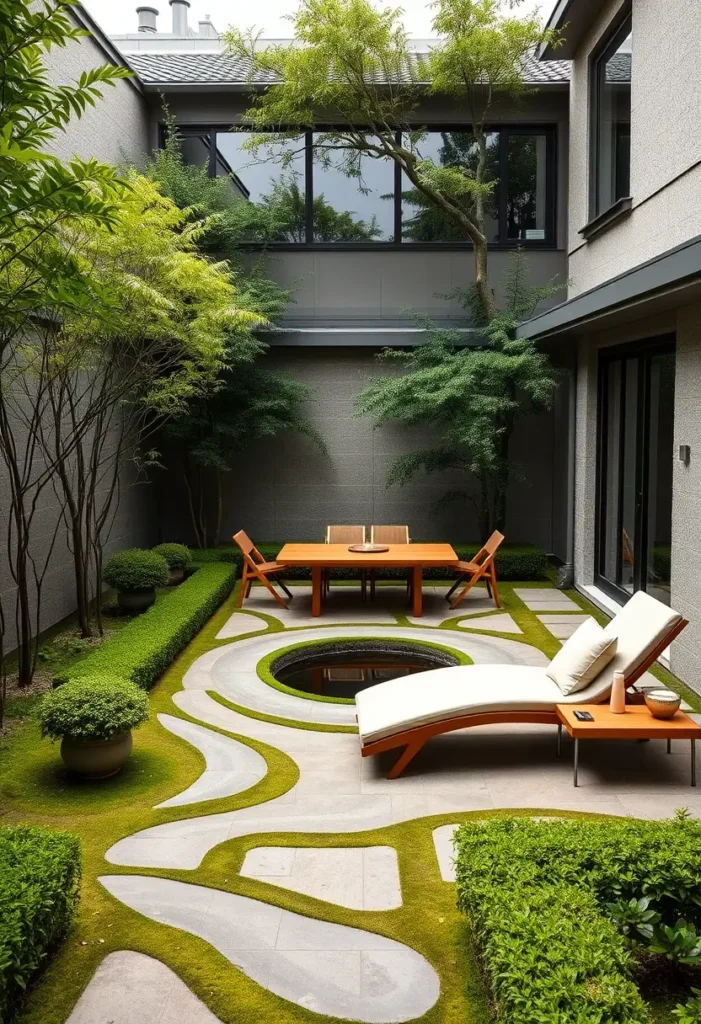
Connect interior and exterior spaces. Use similar materials and color palettes. Blur the boundaries. Create a seamless transition.
12/20. Consider Sightlines from Within
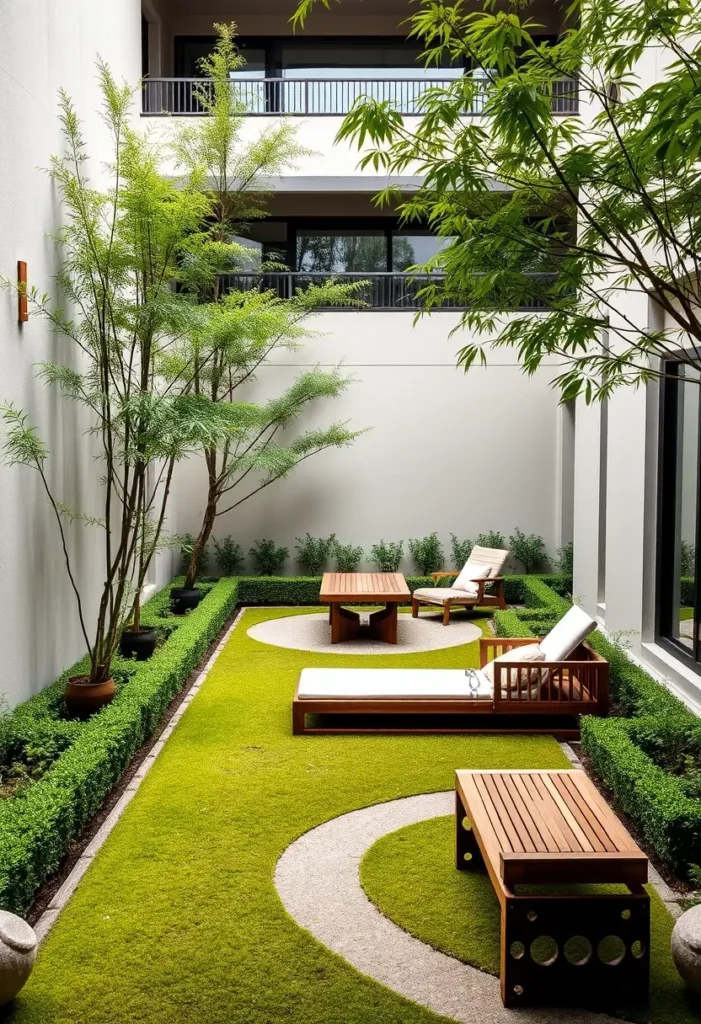
Design the courtyard views from inside the home. Frame key features. Create pleasing compositions. Maximize the visual connection.
13/20. Maximize Space with Multi-Level Design
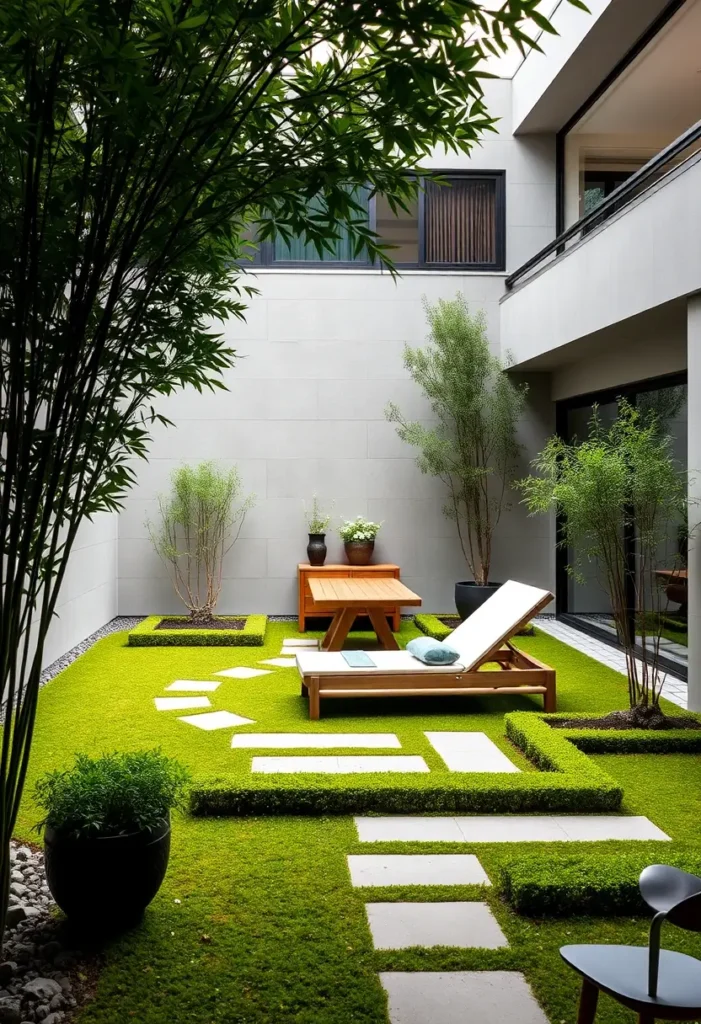
Even subtle level changes can dramatically impact a small courtyard. Introduce raised planting beds or slightly elevated platforms. These variations create visual interest and help define different zones. It is a clever illusion. Making the space feel larger and more dynamic.
14/20. Utilize Ground Cover for Softness and Unity
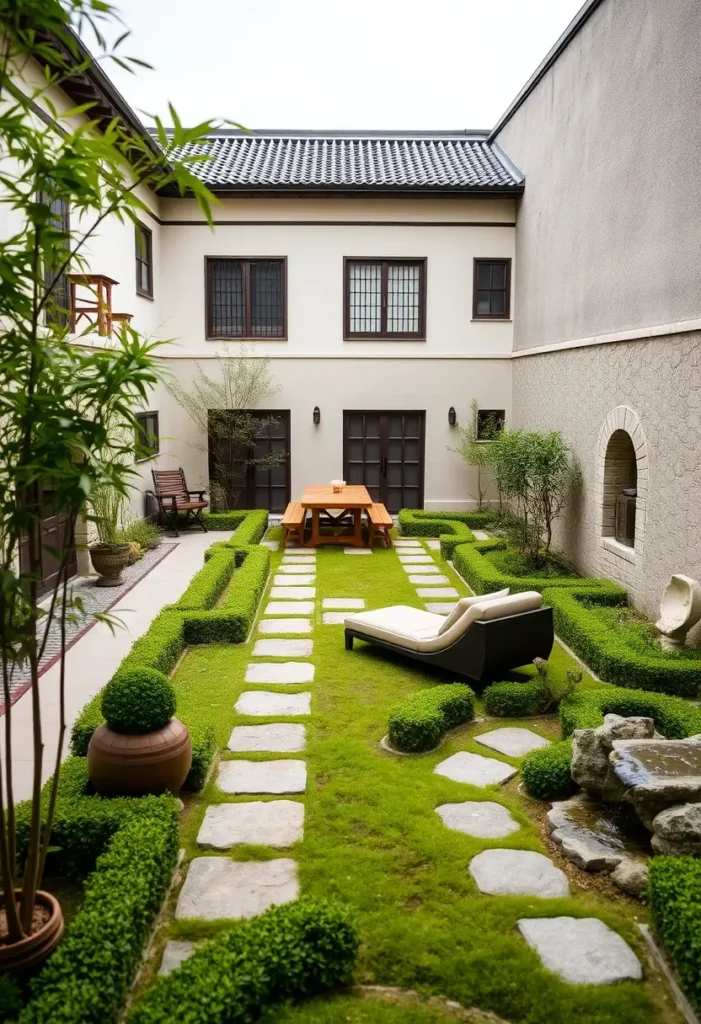
Between paving stones, low-growing ground cover plants introduce texture. Soften hard edges. Unify the design. Choose varieties that thrive in your climate. Creating a lush, carpet-like effect. The ground is important.
15/20. Incorporate Moss for a Touch of Serenity
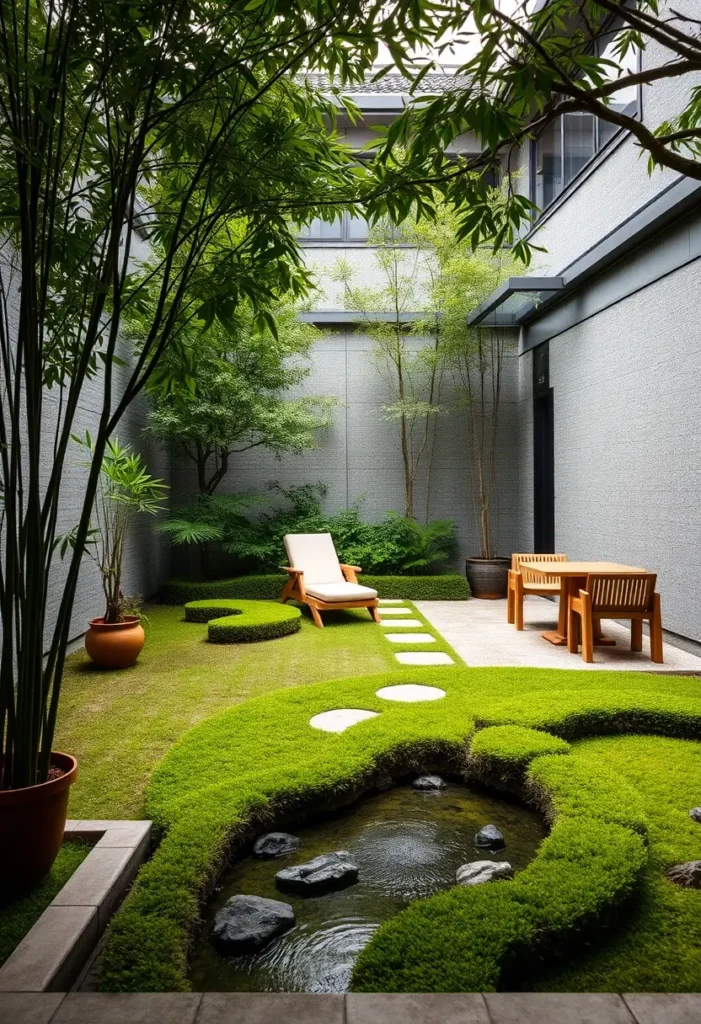
Moss evokes a sense of tranquility and age. Encourage moss growth on stones and in shady areas. Creating a soft, velvety texture. Moss adds to establish a connection with nature. Perfect ambiance.
16/20. Embrace the Art of Karesansui (Dry Landscape)
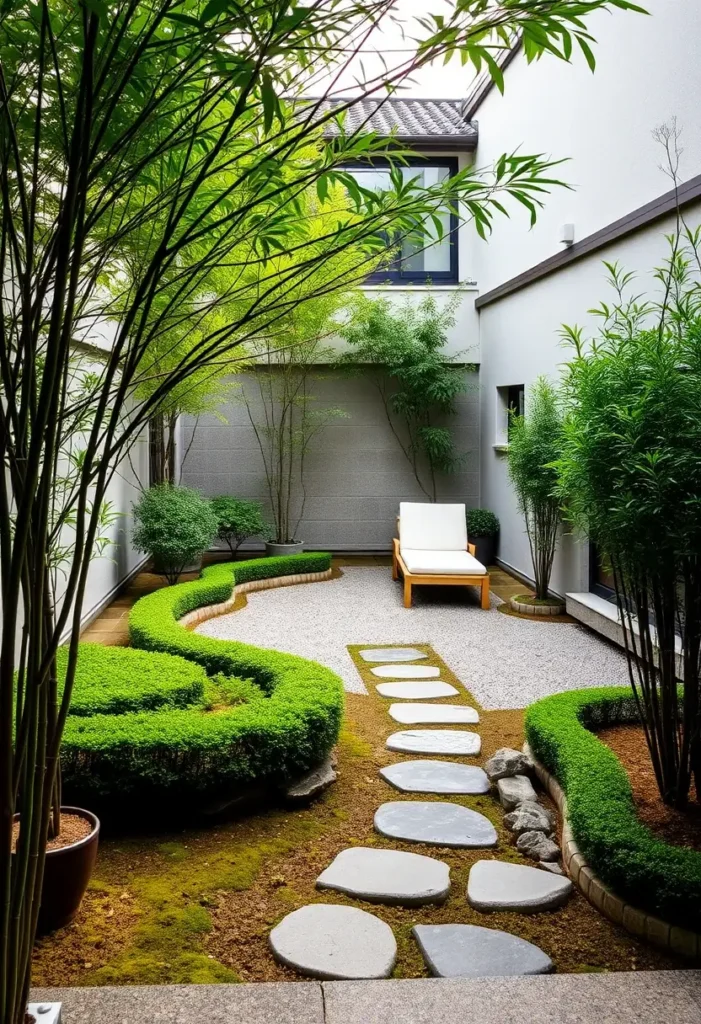
Dry landscape gardens, karesansui, use gravel to represent water. Carefully raked patterns symbolize ripples and waves. This creates a meditative focus. Stepping stones offer a path through the abstract landscape.
17/20. Use Lighting to Create Nighttime Ambiance
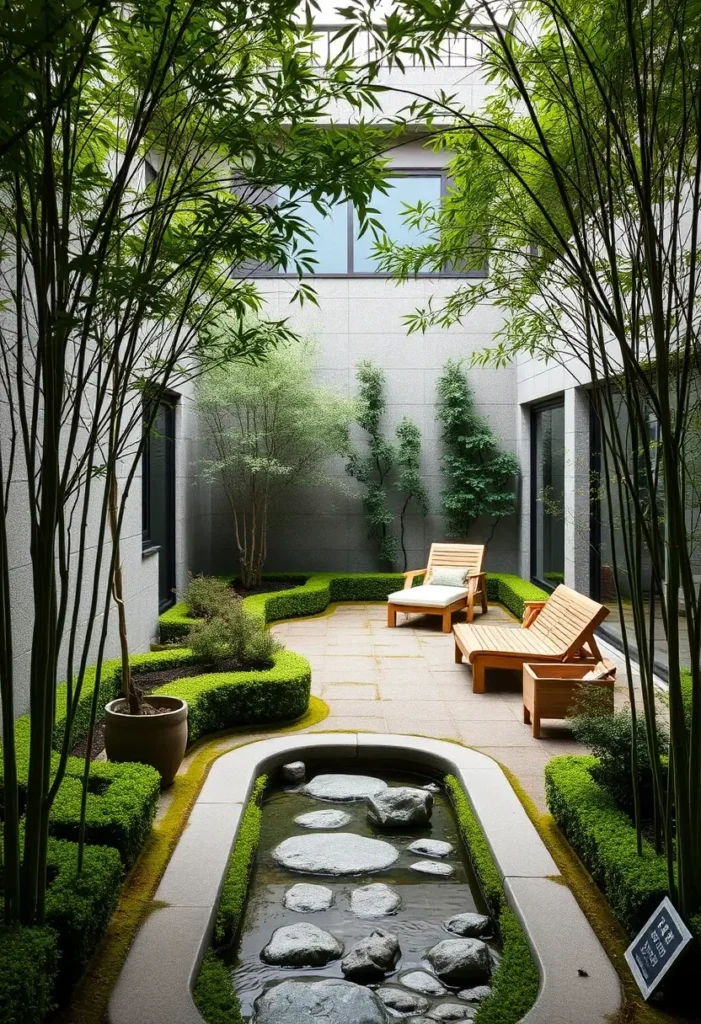
Subtle outdoor lighting enhances the courtyard after dark. Highlight key features. Create a magical atmosphere. Use low-voltage lights for energy efficiency. Extends the enjoyment.
18/20. Select Plants for Form and Texture
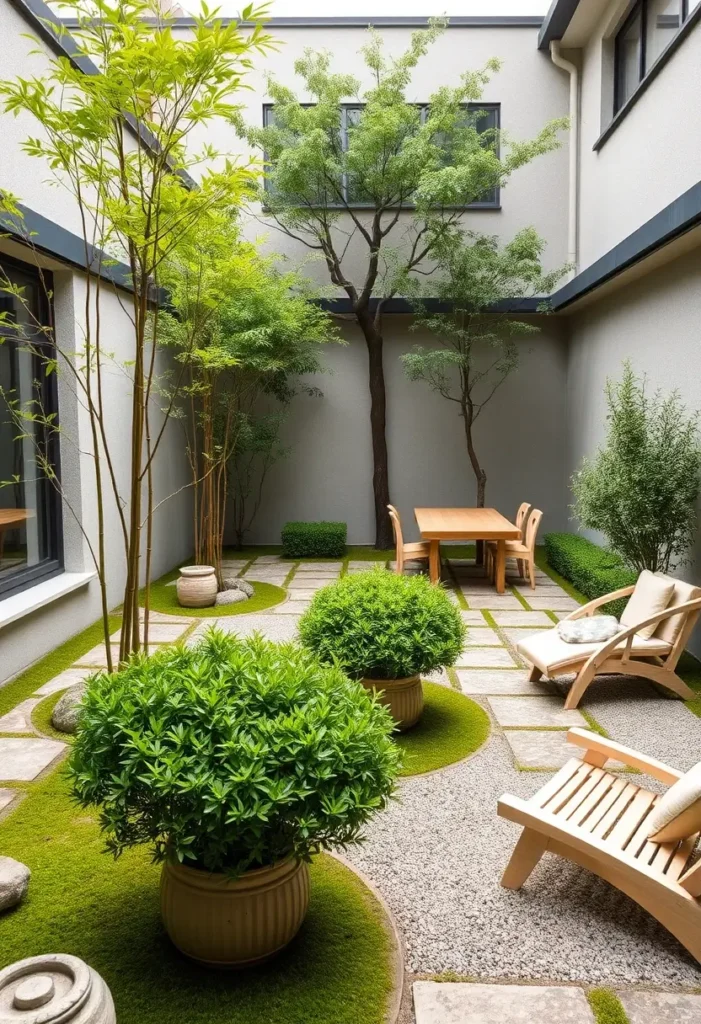
Choose plants for their sculptural qualities. Consider leaf shape, size, and growth habit. Create visual interest throughout the year. Prioritize foliage over flowers. For example: Bamboo, Japanese maple.
19/20. Maintain and Refine Regularly
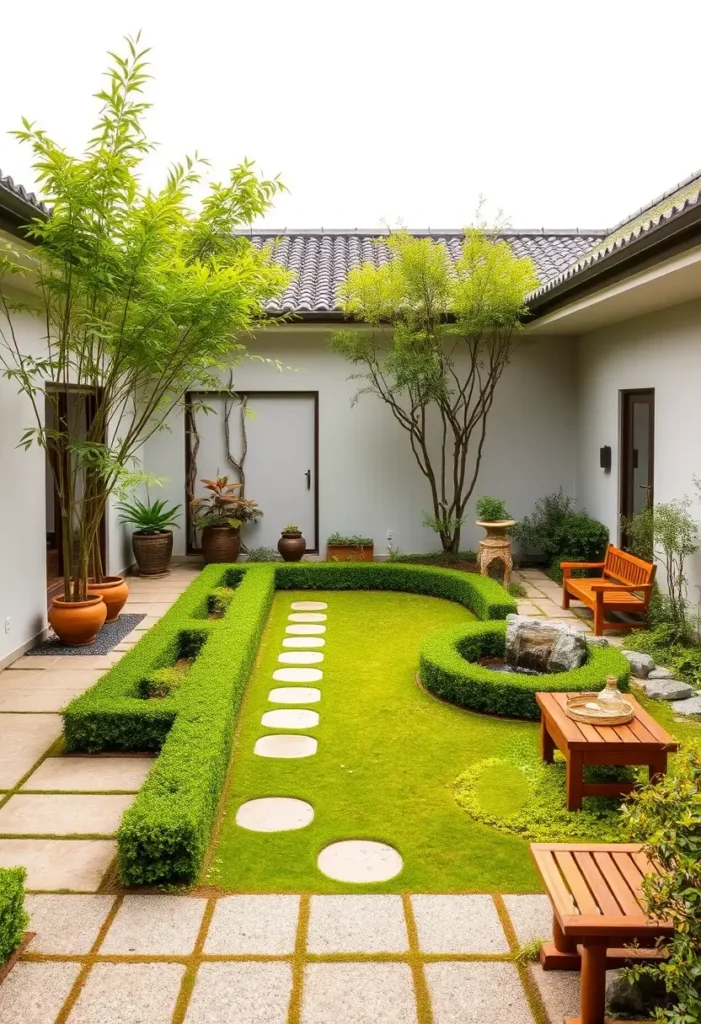
Zen courtyards require ongoing care. Rake gravel, prune plants, and remove debris. Consistent maintenance preserves the intended design. It’s a meditative practice.
20/20. Cultivate a Sense of Personal Sanctuary
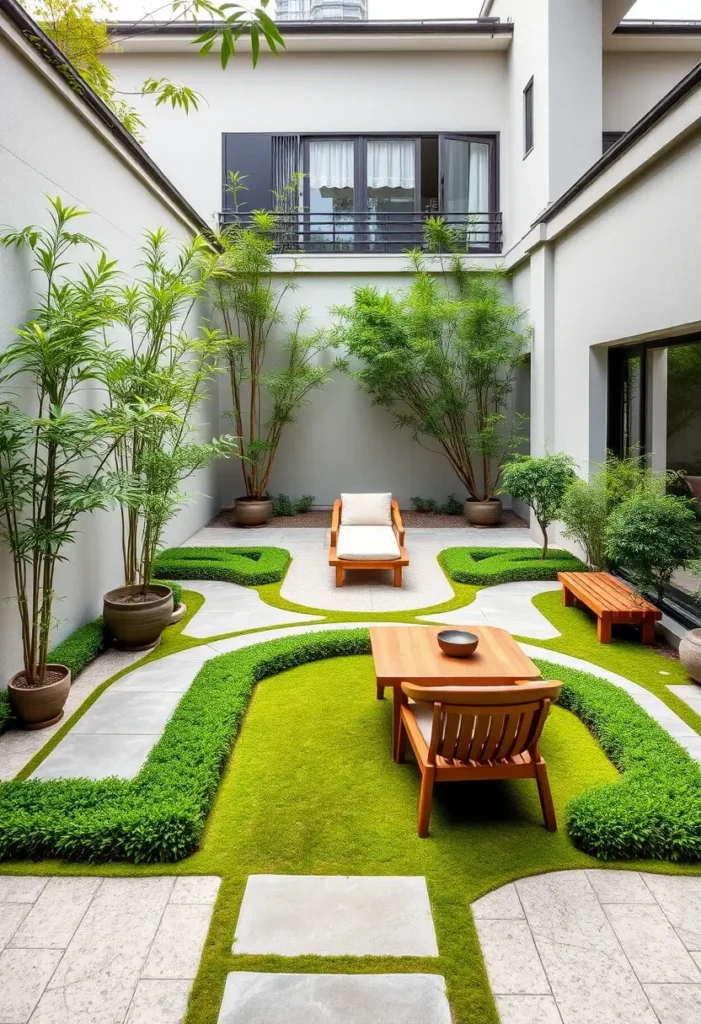
Ultimately, the design should reflect your needs. Create a space for quiet reflection. Personalize the details. Foster a deep connection with nature.
Conclusion:
Creating a modern Zen courtyard is a journey of mindful design and careful cultivation. By incorporating these principles, you can transform any outdoor space into a haven of peace and tranquility. Remember to adapt the ideas to your own preferences and surroundings, allowing your personal sanctuary to evolve and flourish. Embrace the process, and enjoy the serenity your courtyard brings.
FAQs about Modern Zen Courtyards
What is a Zen courtyard?
A Zen courtyard is a thoughtfully designed outdoor space, often inspired by traditional Japanese gardens. It’s intended to be a place of tranquility and contemplation, promoting relaxation and a connection with nature. Modern interpretations often incorporate minimalist aesthetics and clean lines.
What are the key elements of a modern Zen courtyard?
Key elements often include carefully placed stones, gravel (often raked to represent water), water features (basins or fountains), moss, carefully chosen plants (with an emphasis on foliage over flowers), and minimalist furnishings. The overall design emphasizes simplicity and harmony.
Do I need a large space to create a Zen courtyard?
Not at all! The principles of Zen design can be adapted to spaces of any size, from expansive courtyards to small urban patios. The key is to use the available space thoughtfully and create a sense of balance and tranquility.
What kind of plants are best for a modern Zen courtyard?
Plants with interesting forms, textures, and shades of green are ideal. Consider Japanese maples, bamboo, moss, ferns, and various ground cover options. Choose plants that thrive in your local climate and require minimal maintenance.
How do I maintain a Zen courtyard?
Regular maintenance is essential for preserving the intended design. This includes raking gravel, pruning plants, removing debris, and keeping water features clean. The act of maintaining a Zen courtyard can itself be a meditative practice.
What is karesansui?
Karesansui, often referred to as a “dry landscape” garden, is a traditional Japanese garden style that uses gravel or sand to represent water and carefully arranged rocks to symbolize mountains or islands. The raked patterns in the gravel create a sense of flow and movement.
How can I incorporate water into my Zen courtyard?
Water features, even small ones, add a soothing element. Consider a simple stone basin, a small recirculating fountain, or even just a carefully placed bowl of water. The sound and reflection of water contribute to the overall tranquility.
Can I add furniture to a Zen courtyard?
Yes, but choose furniture carefully. Opt for pieces with simple lines, made from natural materials like wood or stone. The goal is to complement the design, not overwhelm it. Prioritize comfort and functionality.
How can I make my Zen courtyard feel more modern?
Embrace clean lines, minimalist aesthetics, and a restrained color palette. Use geometric shapes in paving and planting beds. Incorporate modern materials like concrete or metal (sparingly) alongside natural elements.
How can I personalize my Zen courtyard?
While adhering to the core principles of Zen design, incorporate elements that have personal meaning for you. This could be a particular type of stone, a favorite plant, or a small, meaningful object. The goal is to create a space that resonates with you and fosters a sense of peace.
YOU MIGHT ALSO LIKE:

